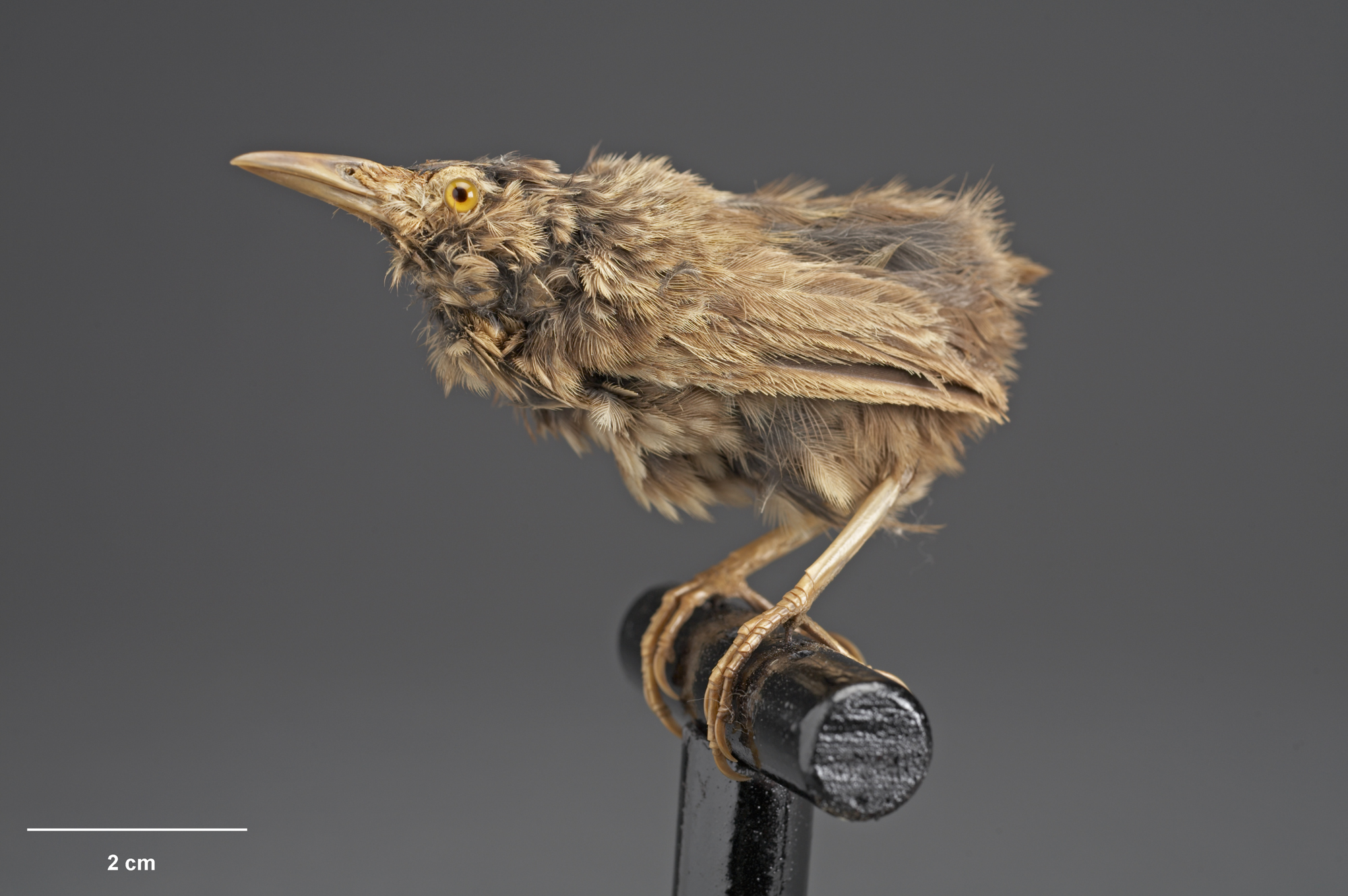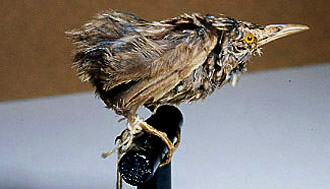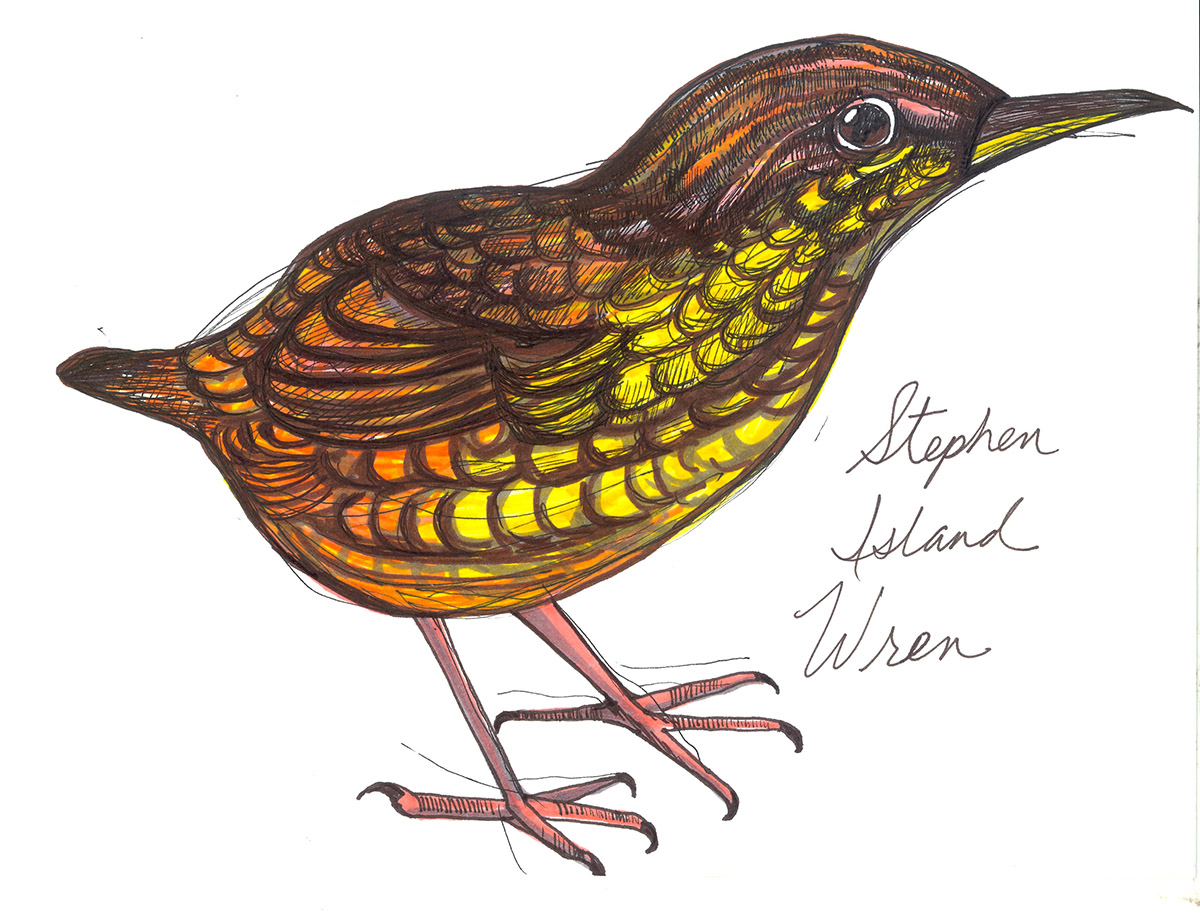
Xenicus lyalli
TAXONOMY
Xenicus lyalli Rothschild, 1894.
OTHER COMMON NAMES
English: Stephens wren; French: Xйnique de Stephen; German:
Stephenschlьpfer; Spanish: Reyezuelo de Stephen.
PHYSICAL CHARACTERISTICS
A typical individual was 4 in (10 cm). Both sexes were colored
similarly, the female being merely duller. Both had small but
stout, strong bills. The lower mandible was light brown, as
were legs and feet, the upper mandible dark brown with a
horn-colored tip. The tail was little more than a stub. Although
the overall body color was brown, the superciliary
streak, chin, and throat were greenish yellow. Light-brown
feather margins on partly overlapping body feathers decorated
male and female with rows of roundish, fuzzy-edged spots on a
darker brown backround. Rows, parallel to one another while
following body contours, ran head to tail and covered the entire
body, lending the birds a passing resemblance to
pinecones. The female’s spots were more softly applied.
DISTRIBUTION
The species inhabited only this small island, a mere 100 ft
(30.5 m) square, but steep-sided, with an elaborate ecology.
HABITAT
Steep, rocky outcroppings; a small forest, grass, and scrub.
BEHAVIOR
All that is known about this species, including its
BEHAVIOR
, was
recorded by a single person, George Lyell. The birds ran and
skittered about on the ground, similar to mice, whose niche
the birds likely filled. The species could not fly, or flew very
little and ineffectively—a handy adaptation to life on a very
small island, but marking them for certain death from introduced
predators. The short, rounded wings and soft plumage
attest as well to diminished or lost powers of flight. The voice
was never described.
FEEDING ECOLOGY AND DIET
The wrens were apparently most active during twilight hours
and may have been nocturnal. They would emerge from holes
in rocks and spend some time poking about, alternately running
about and hiding, most likely hunting for small arthropods.
REPRODUCTIVE BIOLOGY
Unknown.
CONSERVATION STATUS
The Stephens Island wren is emphatically extinct. Its discovery
and extirpation are a masterpiece of cruel irony. The birds
went unnoticed and were safe until the New Zealand government
built a lighthouse on the islet and in 1894 staffed it with
George Lyell, who brought his cat, Tibbet, to the island with
him. The consequences are predictable. Within a few months,
Tibbet killed, then ate or brought home as show-off gifts for
his master, the entire population of Stephens Island wrens.
Lyell sent nine corpora to prominent ornithologists Walter
Lawry Buller and Walter Rothschild, who declared them a
previously unknown species of New Zealand wren. By the time
the glad news reached Lyall, the wrens were extinct. As if in a
final petulant jest, the birds were scientifically dubbed Traversia
lyalli, later changed to Xenicus lyalli, after the owner of the cat
who wiped them out. Ten specimens still exist, distributed
throughout five museums.
SIGNIFICANCE TO HUMANS
Among biologists and conservationists, the Stephens Island
wren has become a poignant symbol of the fragility of isolated
island species with limited space and populations.
Photo Gallery of - Stephens Island wren




 Animalia Life
Animalia Life